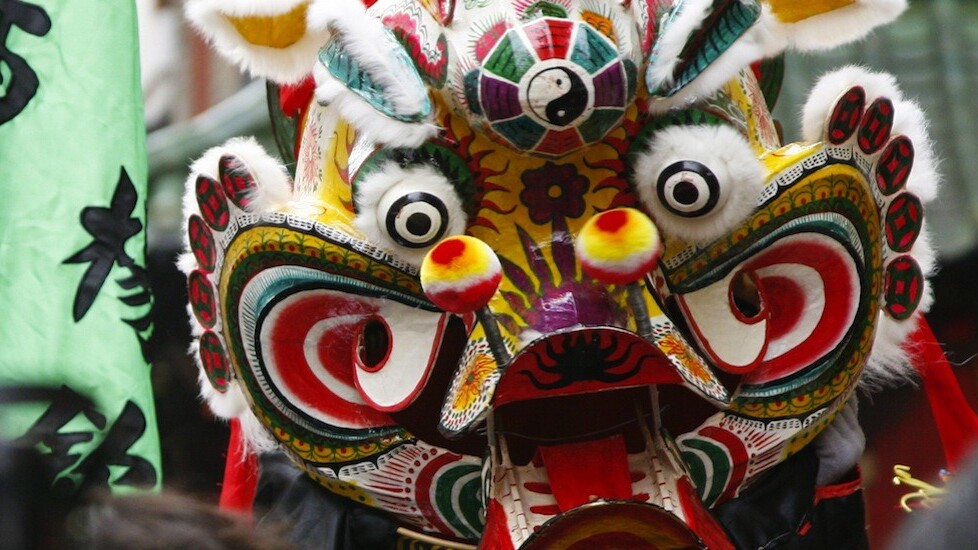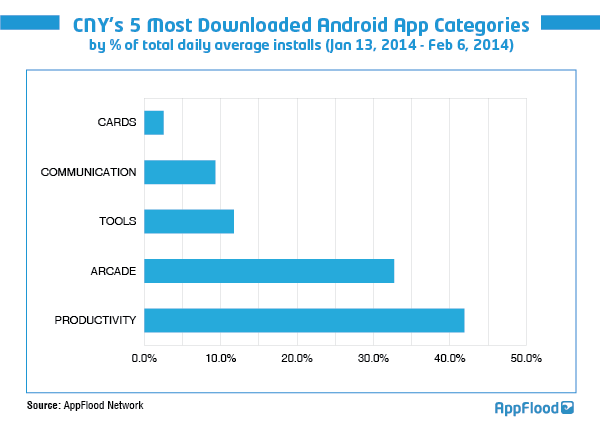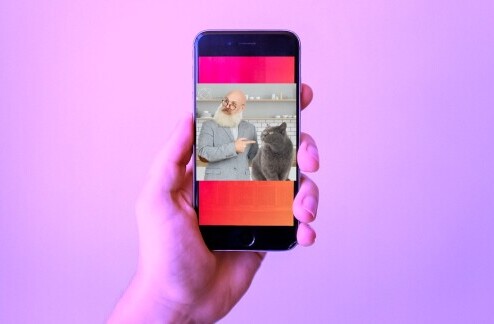
Chinese New Year heralds in what’s known as the world’s largest annual migration, as people in the country start to make their way back to their hometowns. This means that despite official Chinese New Year holidays starting January 31 and ending February 6, the busiest period of the season takes place beforehand, starting from around January 16.
With 500 million mobile Internet users in China as of last year, any indicator of the way they spend their time on their smartphones is valuable for advertisers. How exactly did they behave during Chinese New Year?
AppFlood, a mobile advertising network run by China’s Papaya Mobile, has come up with a report that notes the average click volume on mobile ads between January 16 and February 6 was 51.5 percent higher than the period before January 16, suggesting that mobile usage increased during the holiday.
However, as far as app downloads were concerned, AppFlood notes that mobile users were more inclined to download apps before their long journeys back to their hometowns — so the highest rate of app installs happened just before January 16. Subsequently, the app install rate steadily decreased — declining an average of 1.37 percent day-over-day after January 16 up to February 6, making up a total slide of 28.7 percent.
AppFlood says this is because smartphone users who are not inclined to download apps when they are traveling, or when they are back in their hometowns out visiting at other people’s houses, as a stable Wi-Fi connection might be hard to come by.
The report’s results are based on a sample size of nearly 1.8 million unique active Android users in China during December 1, 2013 to February 6, 2014, an AppFlood spokesperson says. They were monitored based on the clicks and installs of ads within publishers’ apps based on AppFlood’s network of users in China.
According to AppFlood, messaging service WeChat was a “de facto app during the holidays” and “clearly was the forerunner,” but other top apps by percentage of daily average clicks were arcade games and productivity-related apps. Looking at the average daily volume of clicks on mobile ads between January 12 (when app install activity spiked) and February 6 (the end of the official Chinese New Year holidays), AppFlood notes that arcade games accounted for 9.55 percent of the total daily average clicks, becoming the most popular Android app category during the period. Entertainment apps followed after with 3.42 percent.
As for app installs, productivity apps topped the charts based on average daily installs during the same period, accounting for 41.9 percent of total daily installs. Arcade games followed with 32.7 percent of total installs.
AppFlood notes that the “Chinese New Year holiday is one of the rare opportunities for developers to pick up quality and affordable users — particularly during the days leading up to the Chinese New Year,” due to the growth in clicks during the season.
Comparing average mobile ad installs before and after January 10 — when app installs picked up pace before the peak travel period — AppFlood finds that mobile advertisers on average chalked up 121.9 percent more installs, the bulk of them happening before January 23.
Chinese New Year is looking to be a time for tech firms to garner more eyeballs from mobile users.
Chinese search giant Baidu launched a map illustrating the most popular migration paths, while messaging app WeChat brought Chinese New Year traditions into the mobile era by tapping into digital payments and letting users send monetary gifts in place of ‘red envelopes.’
Headline image via Bikeworldtravel / Shutterstock.com
Get the TNW newsletter
Get the most important tech news in your inbox each week.







